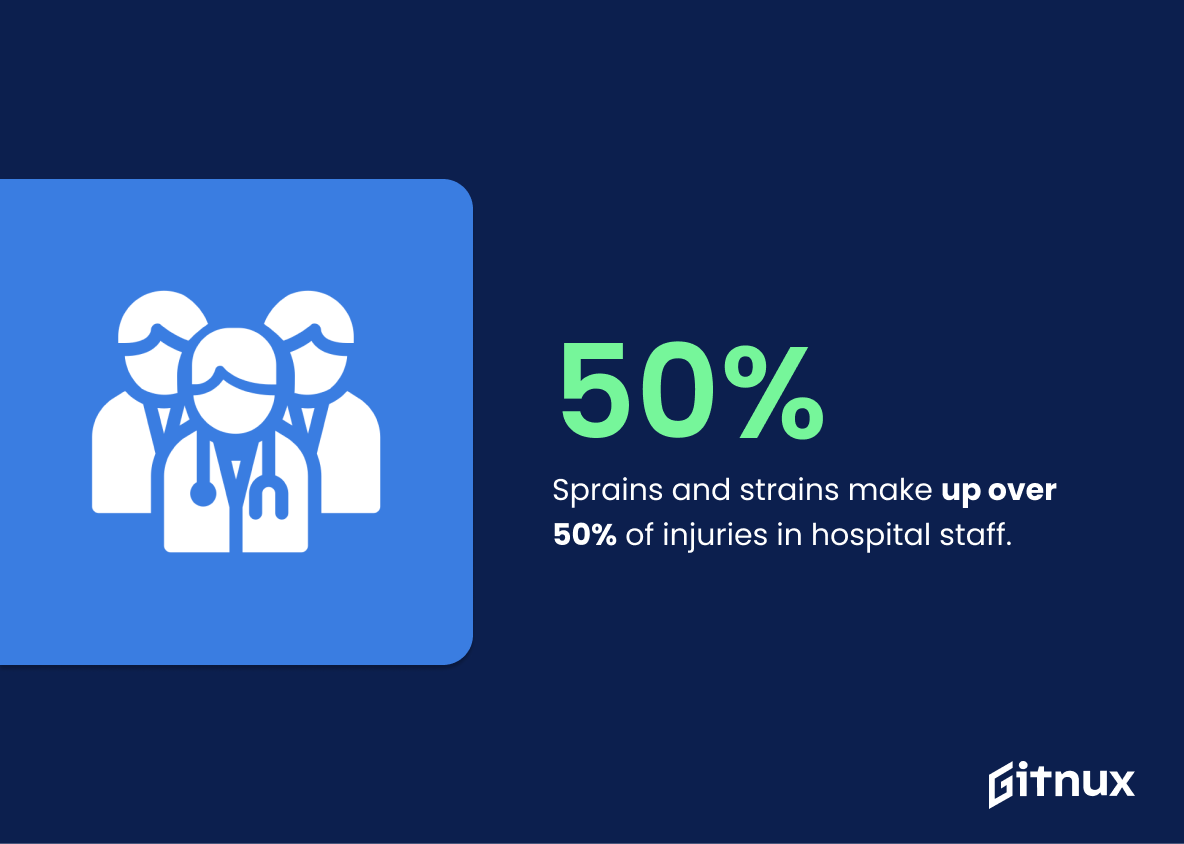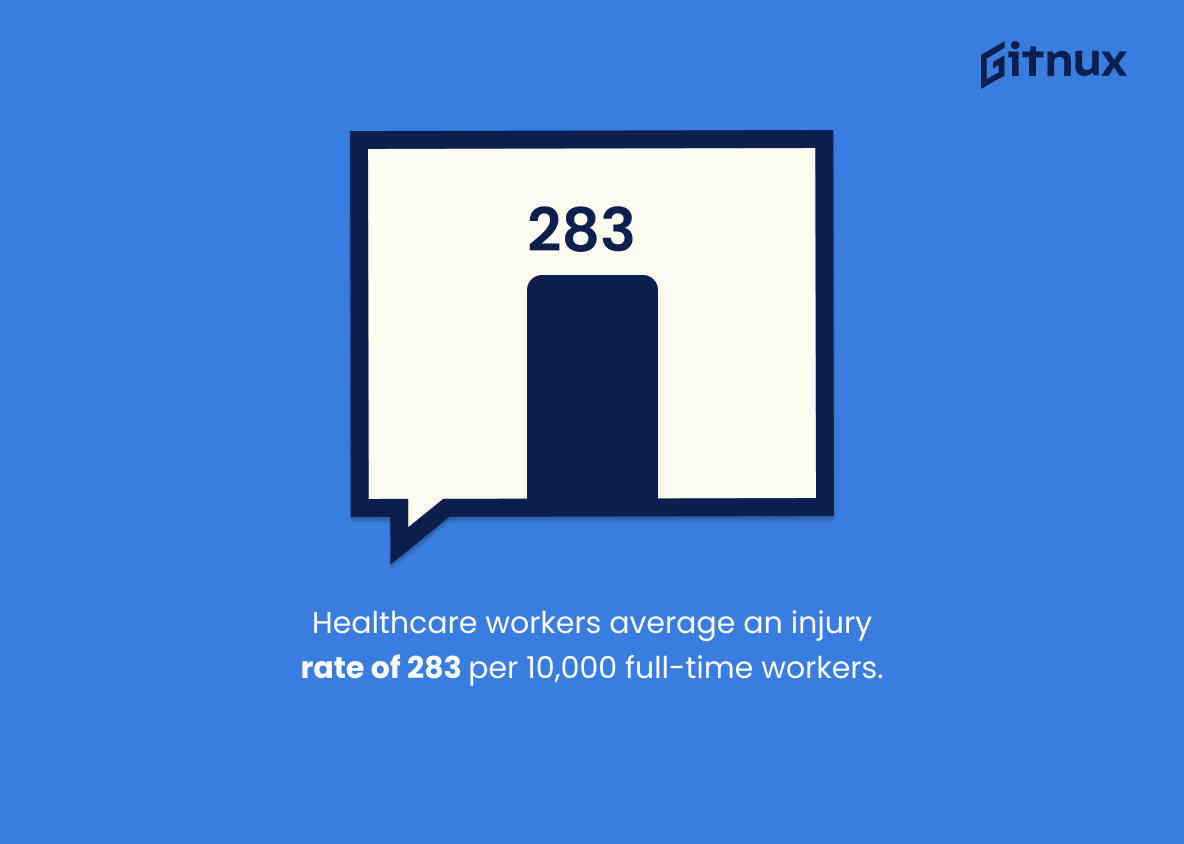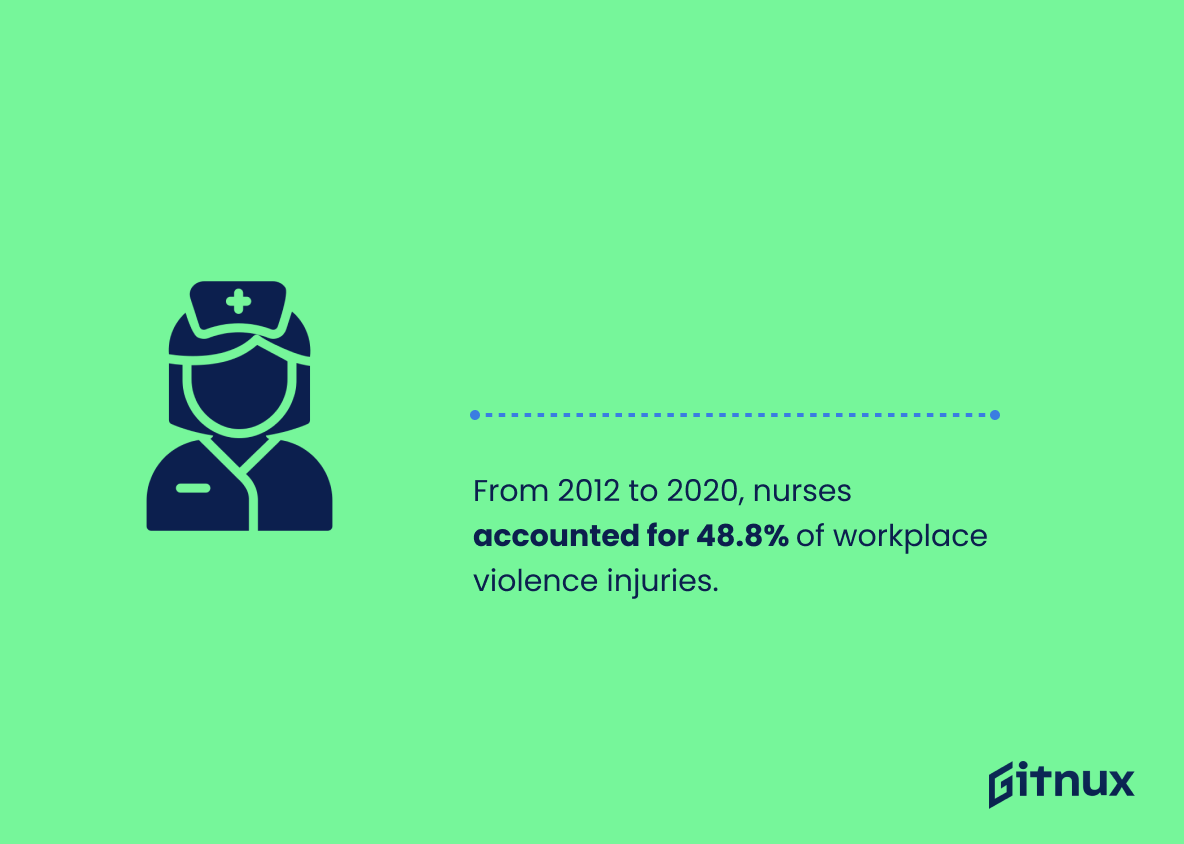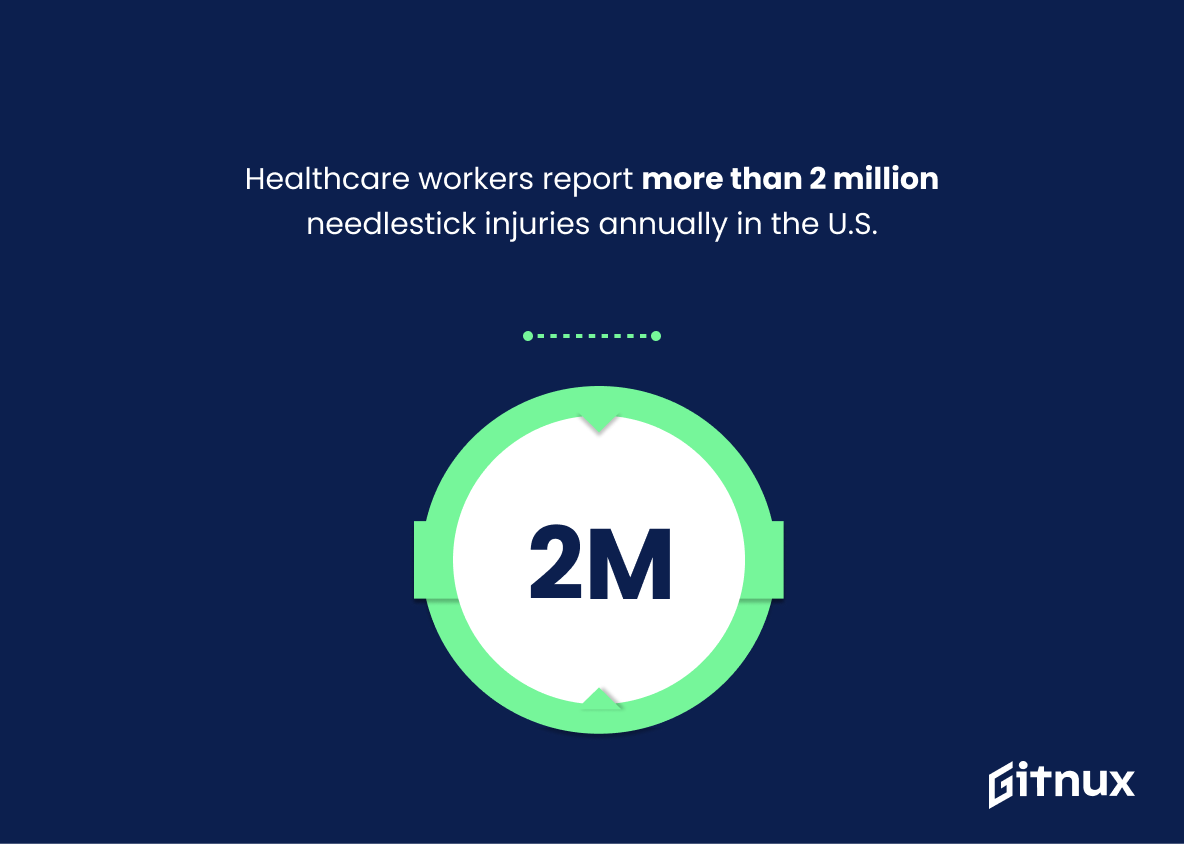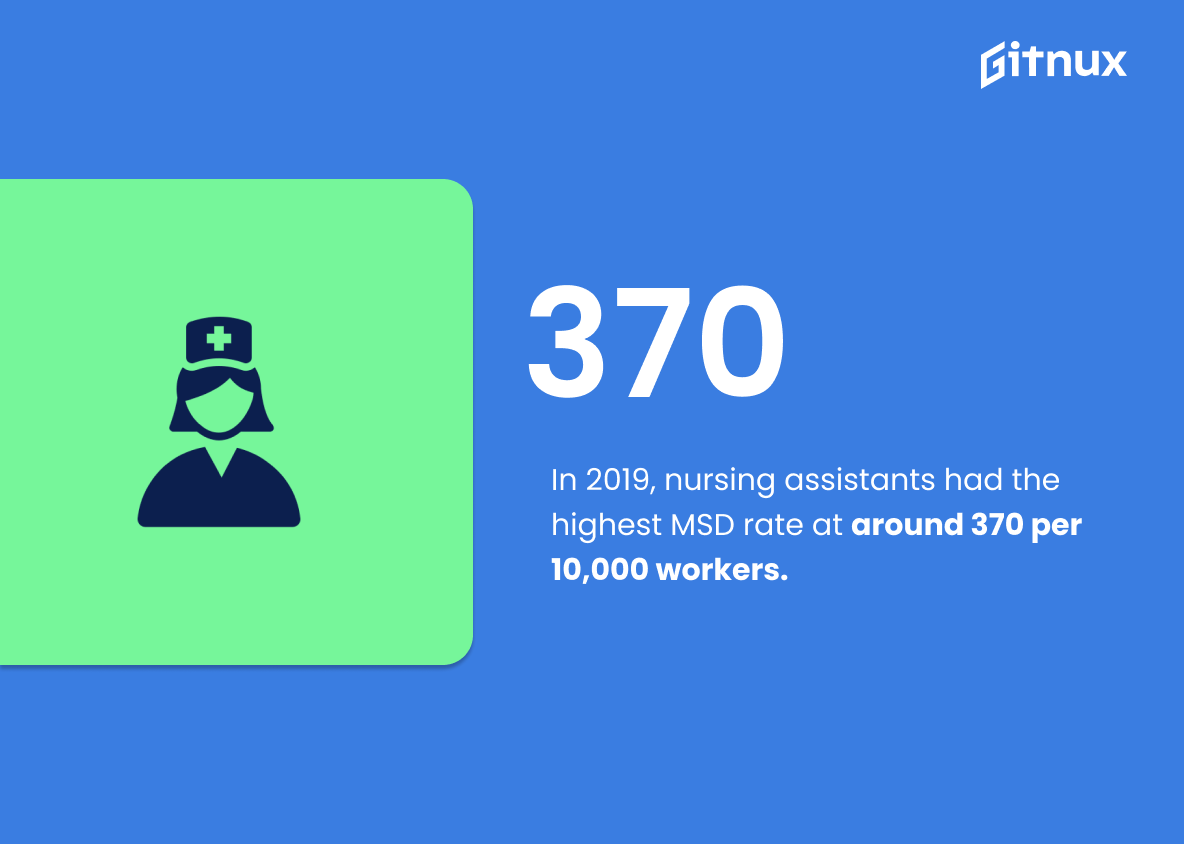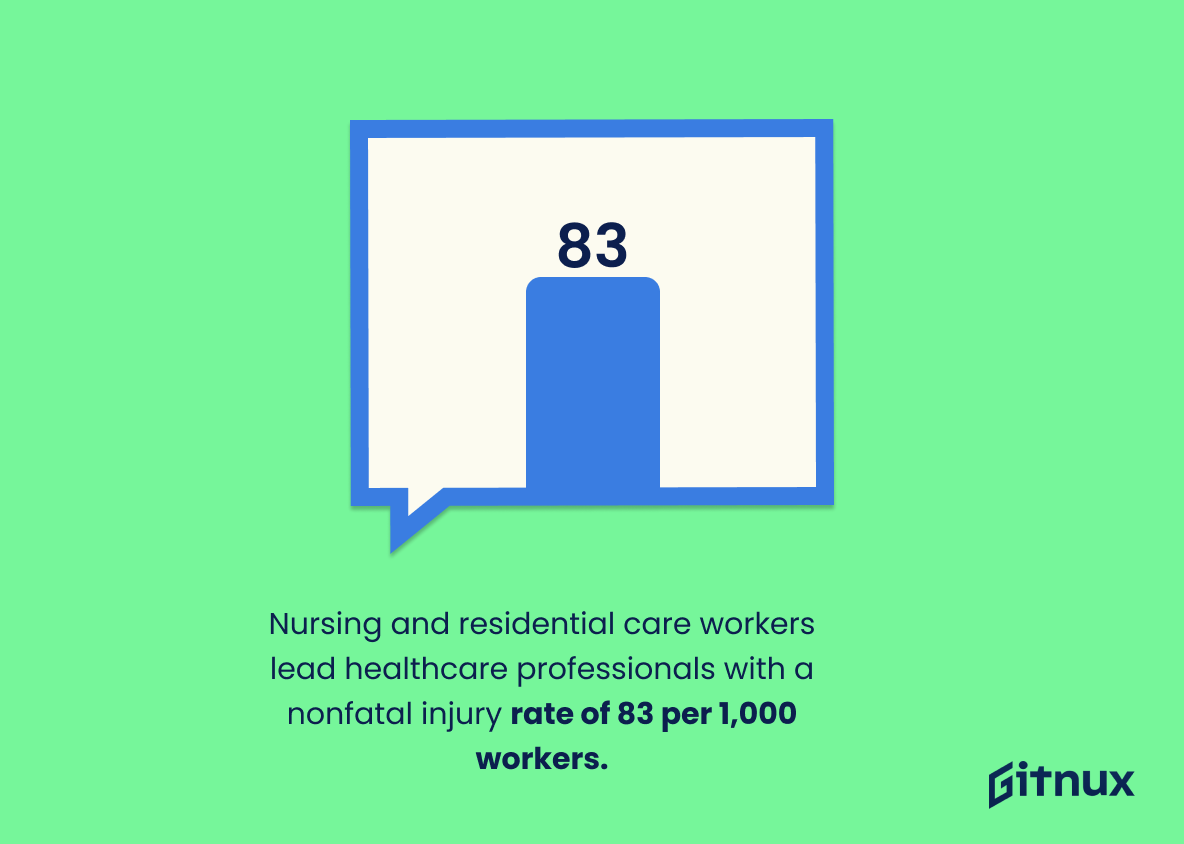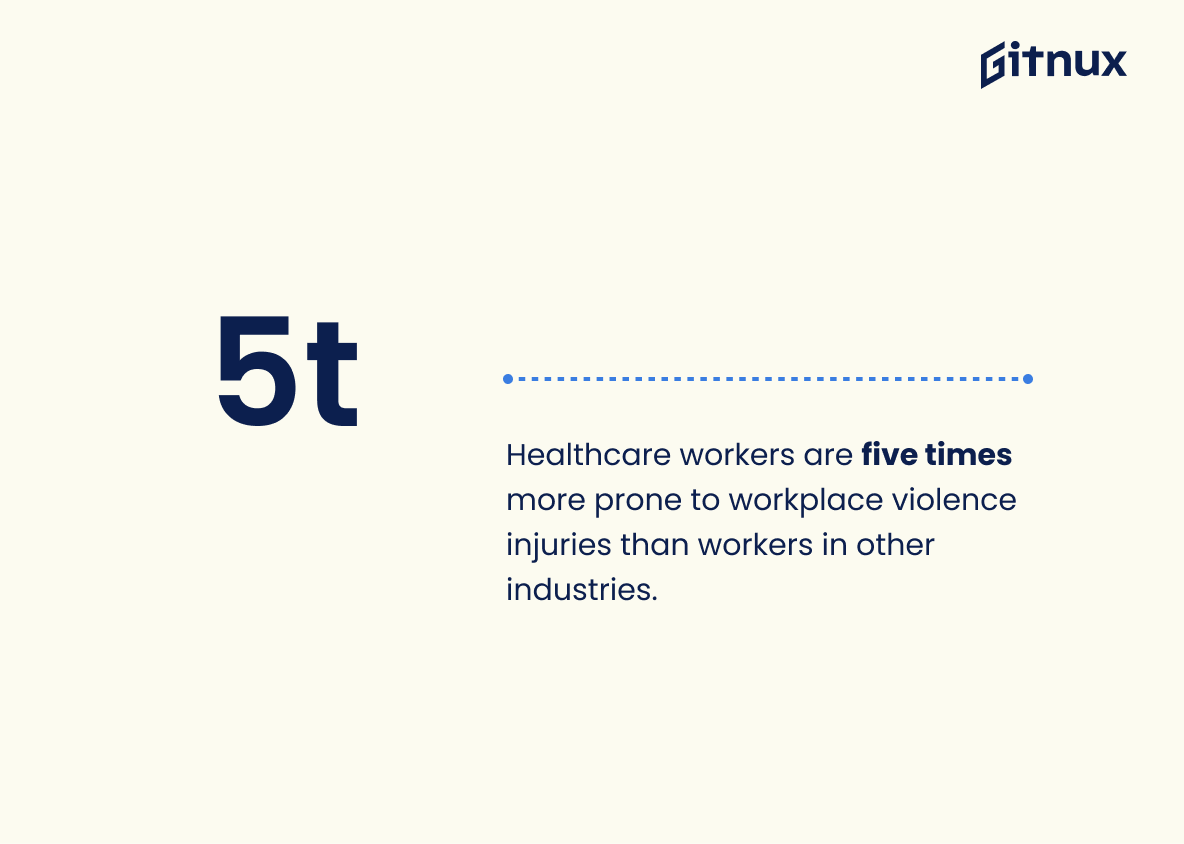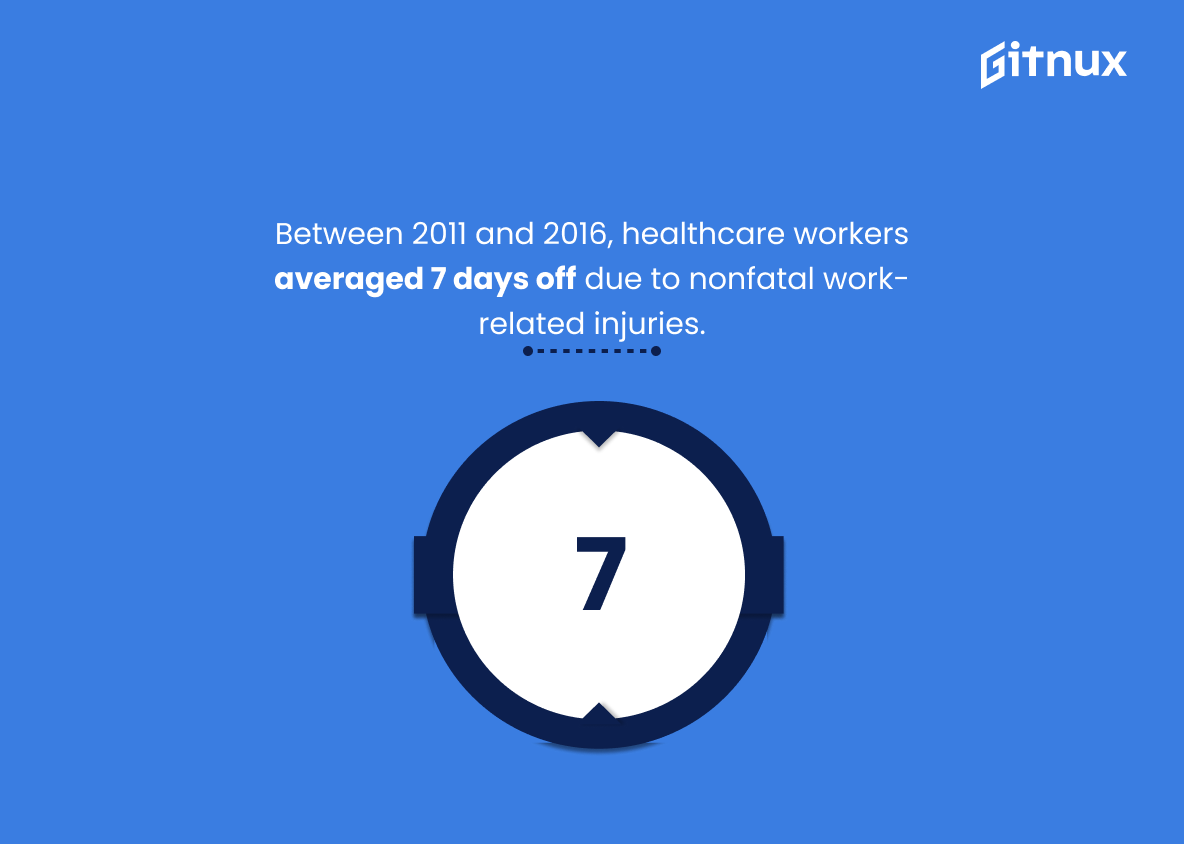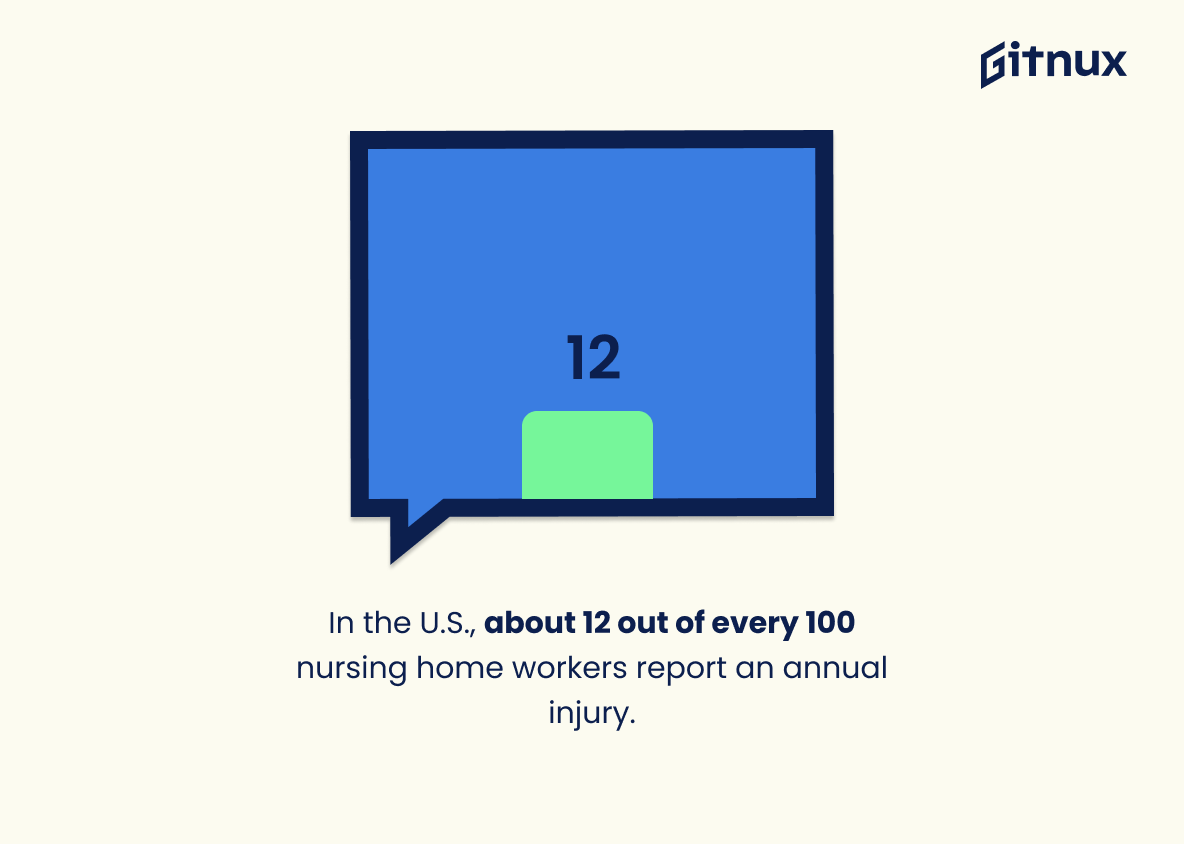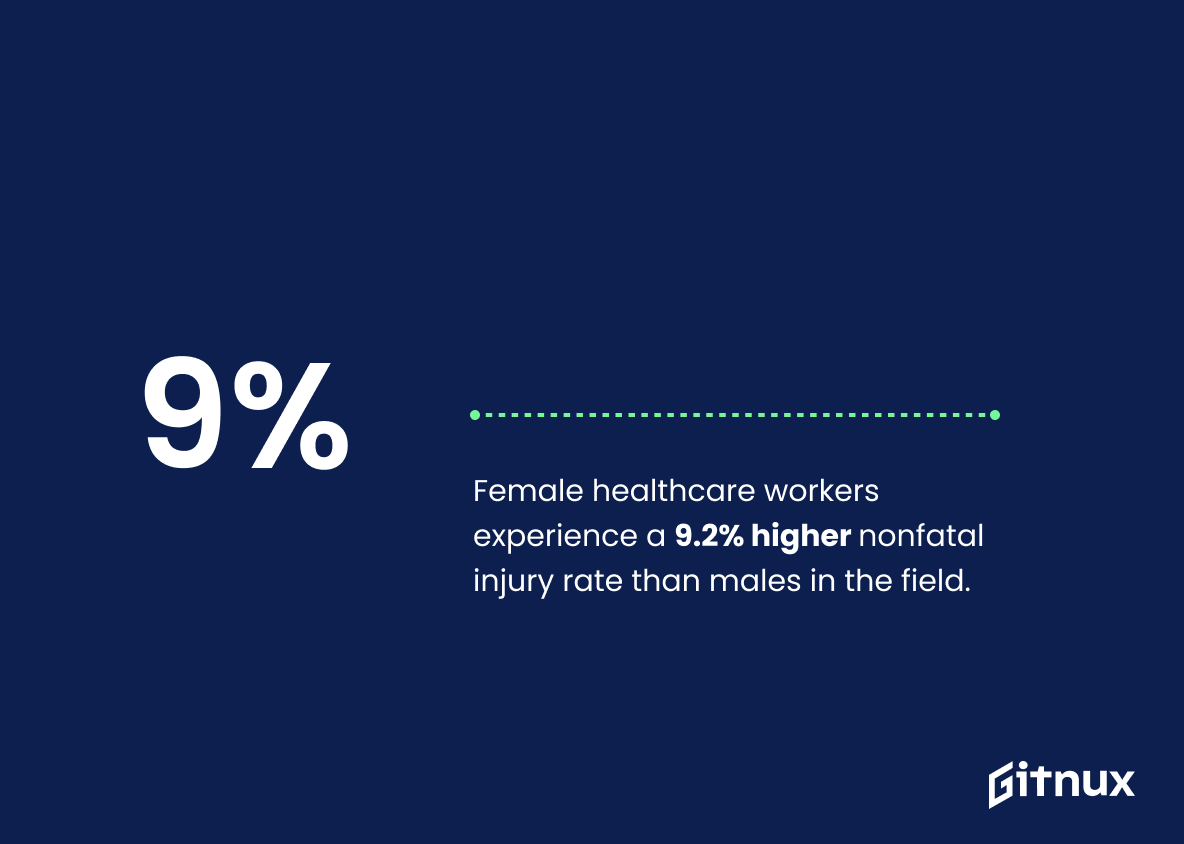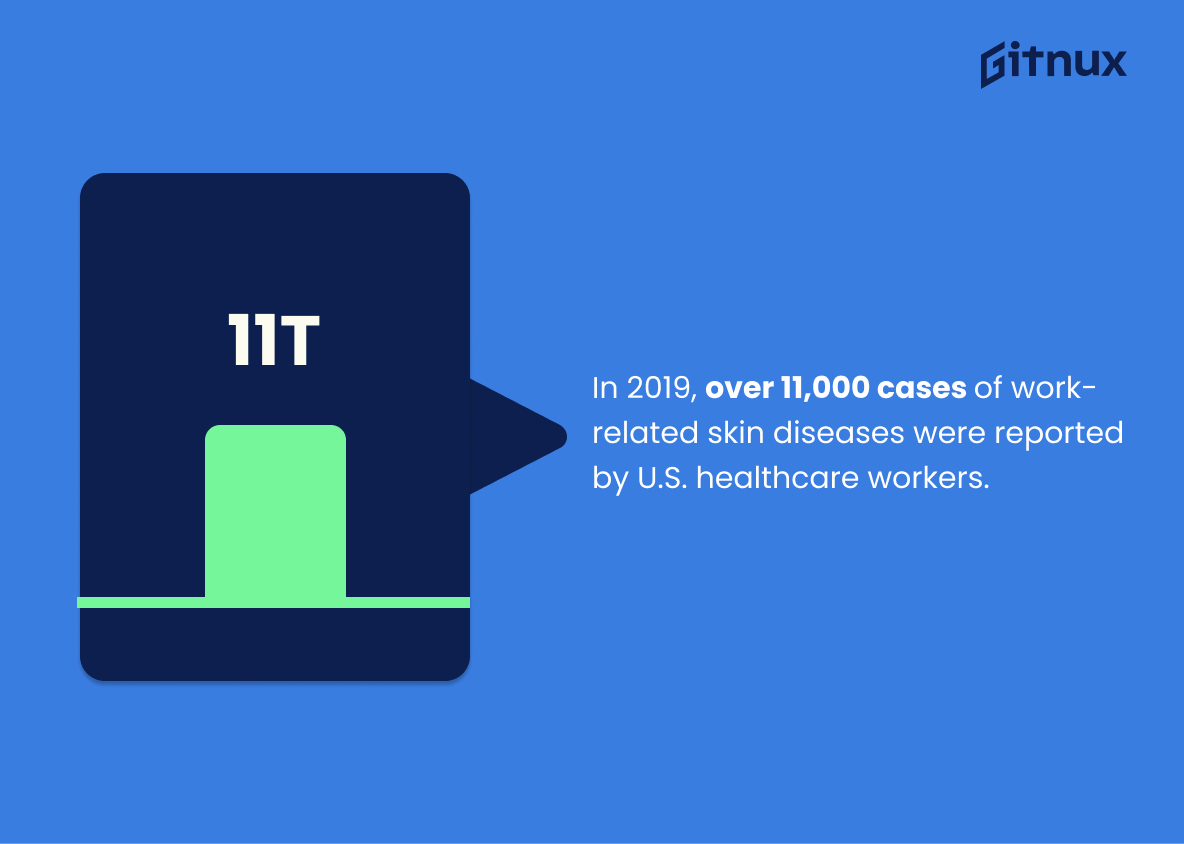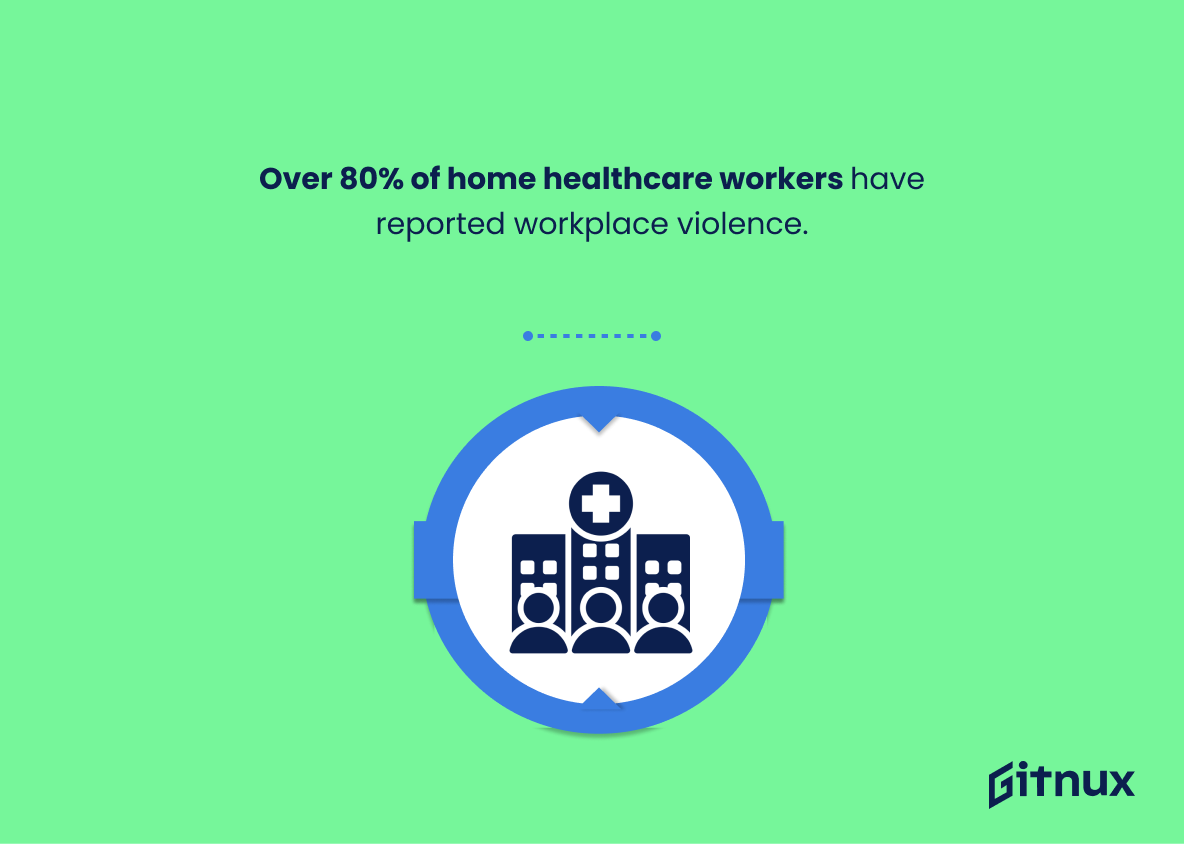The safety of healthcare workers is a critical issue that affects the entire U.S. workforce, and it’s important to understand the statistics surrounding injuries in this field. According to data from OSHA, 45% of all workplace injuries occur among healthcare workers; additionally, there were approximately 51,700 cases of nonfatal occupational illnesses or injuries reported by these professionals in 2020 alone. Sprains and strains account for more than half of hospital worker-related incidents while an average injury rate per 10,000 full-time employees stands at 283 – higher than any other industry sector.
Registered nurses and licensed practical/vocational nurses experienced 48.8% of all workplace violence related injuries between 2012 and 2020; sharps-related accidents are also common with 385 thousand such occurrences annually across America’s hospitals as well as 2 million needlestick events each year according to estimates from OSHA . Nursing assistants have been found to suffer 370 musculoskeletal disorders (MSDs) per 10k personnel -the highest rate amongst occupations -while overexertion accounts for one third total claims filed by medical staff members nationwide . Slip trips & falls represent 25 percent overall reports made whilst nursing & residential care workers experience 83 instances every 1K individuals on average , 5 times greater compared against other industries when it comes down to violent episodes occurring within their workplaces . In 2019 11 thousand skin diseases or disorders were documented amongst health practitioners whereas 80 % homecare providers had encountered physical aggression during their careers ; 4%-10 % emergency department visits can be attributed towards eye trauma too which further highlights how hazardous working conditions remain even today despite advances being made throughout medicine over recent years . Finally female medics endure 9 point two percent additional risk versus male counterparts due largely due back pain issues affecting 8 out ten people employed within this profession
This statistic is a stark reminder of the dangers that healthcare workers face on a daily basis. It highlights the need for improved safety measures and better protection for those who are risking their lives to care for others. It also serves as a call to action for employers to take a closer look at their safety protocols and ensure that their employees are adequately protected.
In 2020, there were approximately 51,700 cases of nonfatal occupational injuries and illnesses among healthcare workers.
This statistic is a stark reminder of the risks healthcare workers face on a daily basis. It highlights the need for improved safety measures and better protection for those who are on the frontlines of the healthcare industry. It also serves as a reminder of the importance of taking care of our healthcare workers and ensuring they have the resources they need to stay safe and healthy.
Healthcare Worker Injury Statistics Overview
Sprains and strains account for more than 50% of injuries among hospital workers.
This statistic is a stark reminder of the dangers that healthcare workers face on a daily basis. It highlights the need for improved safety protocols and better ergonomic practices in order to reduce the risk of sprains and strains among hospital workers. It also serves as a call to action for healthcare organizations to prioritize the health and safety of their employees.
Healthcare workers experience an average injury rate of 283 per 10,000 full-time workers.
This statistic is a stark reminder of the dangers that healthcare workers face on a daily basis. It highlights the need for improved safety measures and better protection for those who are on the front lines of providing care. It also serves as a reminder of the importance of taking the necessary steps to reduce the risk of injury for healthcare workers.
Between 2012 and 2020, registered nurses and licensed practical/vocational nurses experienced 48.8% of all workplace violence injuries.
This statistic is a stark reminder of the dangers that healthcare workers face on a daily basis. It highlights the fact that nurses, in particular, are disproportionately affected by workplace violence, and that this is an issue that needs to be addressed. It is a call to action for healthcare organizations to prioritize the safety of their employees and to take steps to reduce the risk of violence in the workplace.
Around 385,000 sharps-related injuries occur annually among healthcare workers in the United States.
This statistic is a stark reminder of the dangers healthcare workers face on a daily basis. It highlights the need for improved safety protocols and better training to protect these essential workers from harm. It also serves as a call to action for healthcare organizations to prioritize the safety of their employees and ensure that they are adequately protected from sharps-related injuries.
Healthcare workers report more than 2 million needlestick injuries annually in the U.S.
This statistic is a stark reminder of the dangers healthcare workers face on a daily basis. It highlights the need for improved safety protocols and better protective equipment to ensure the safety of those who are on the frontlines of healthcare. It also serves as a reminder of the importance of proper training and education for healthcare workers to help reduce the risk of needlestick injuries.
In 2019, nursing assistants had a rate of approximately 370 musculoskeletal disorders (MSDs) per 10,000 workers, the highest of any occupation.
This statistic is a stark reminder of the physical toll that nursing assistants face on a daily basis. With the highest rate of MSDs among any occupation, it is clear that nursing assistants are at a greater risk of developing musculoskeletal disorders due to the strenuous nature of their job. This highlights the need for healthcare organizations to prioritize the safety and well-being of their nursing assistants, and to ensure that they are provided with the necessary resources to prevent and manage MSDs.
Nursing and residential care workers experience the highest rate of nonfatal injury among healthcare workers, at 83 injuries or illnesses per 1,000 workers.
This statistic is a stark reminder of the risks that nursing and residential care workers face on a daily basis. It highlights the need for greater safety measures to be taken in order to protect these workers from injury and illness. It also serves as a call to action for healthcare organizations to prioritize the health and safety of their employees.
Healthcare workers are 5 times more likely than workers in other industries to experience workplace violence injuries.
This statistic is a stark reminder of the dangers that healthcare workers face on a daily basis. It highlights the need for increased safety measures and better protection for those in the healthcare industry, as they are five times more likely to experience workplace violence injuries than those in other industries. This statistic is a call to action for employers to take the necessary steps to ensure the safety of their healthcare workers.
Slip, trip, and fall incidents represent 25% of all reported injury claims among healthcare workers.
The fact that slip, trip, and fall incidents account for a quarter of all reported injury claims among healthcare workers is a sobering reminder of the risks that these professionals face on a daily basis. It highlights the need for healthcare facilities to take proactive steps to ensure the safety of their workers, such as providing adequate training and protective equipment, and regularly inspecting the premises for potential hazards.
Between 2011 and 2016, the average number of days away from work due to nonfatal work-related injuries among healthcare workers was 7 days.
This statistic is a powerful indicator of the prevalence of nonfatal work-related injuries among healthcare workers. It shows that, on average, healthcare workers are taking seven days away from work due to these injuries, which can have a significant impact on their ability to perform their duties. This statistic is a reminder of the importance of taking steps to reduce the risk of injury in the healthcare workplace.
Workplace assaults cause 75% of lost work time among nurses.
This statistic is a stark reminder of the dangers that nurses face in the workplace. It highlights the fact that nurses are particularly vulnerable to workplace assaults, and that these assaults are having a significant impact on their ability to work. This statistic is a call to action for healthcare providers to take steps to ensure that nurses are safe and protected in the workplace.
In the U.S., approximately 12 out of every 100 nursing home workers report an injury in a given year.
This statistic is a stark reminder of the risks that healthcare workers face on a daily basis. It highlights the need for improved safety measures and better working conditions for those in the nursing home industry. It also serves as a warning to those considering a career in this field, as it shows that the risk of injury is real and should not be taken lightly.
Female healthcare workers have a 9.2% higher rate of nonfatal injury compared to their male counterparts.
This statistic is a stark reminder of the dangers that female healthcare workers face on the job. It highlights the need for greater safety measures to protect them from injury, as well as the need for greater recognition of the risks they take to provide care to others. It also serves as a call to action for employers to ensure that their female healthcare workers are provided with the same level of safety and protection as their male counterparts.
In 2019, healthcare workers in the U.S. reported more than 11,000 cases of occupational skin diseases or disorders.
The alarming statistic that healthcare workers in the U.S. reported more than 11,000 cases of occupational skin diseases or disorders in 2019 is a stark reminder of the risks that healthcare workers face on a daily basis. This figure highlights the need for greater awareness and protection of healthcare workers from potential skin-related injuries. It is a call to action for healthcare organizations to prioritize the safety of their employees and ensure that they are provided with the necessary resources to protect themselves from occupational skin diseases or disorders.
More than 80% of home healthcare workers have reported experiencing workplace violence.
This statistic is a stark reminder of the dangers that healthcare workers face in their line of work. It highlights the prevalence of workplace violence in the home healthcare sector, and the need for employers to take steps to protect their employees from such threats. It also serves as a warning to healthcare workers to be aware of their surroundings and take necessary precautions to ensure their safety.
Between 4% and 10% of all emergency department visits by healthcare workers are attributed to eye injuries.
This statistic is a stark reminder of the dangers that healthcare workers face in the workplace. It highlights the fact that eye injuries are a significant issue for healthcare workers, and that steps must be taken to ensure their safety. It also serves as a warning to other healthcare workers to take the necessary precautions to protect their eyes from potential harm.
Conclusion
The statistics presented in this blog post demonstrate the prevalence of injuries among healthcare workers. From sprains and strains to slips, trips, and falls; from overexertion to workplace violence; from sharps-related injuries to skin diseases or disorders – these are just some of the risks that healthcare workers face on a daily basis. Women appear more likely than men to experience nonfatal injury at work, while nursing assistants have the highest rate of musculoskeletal disorder (MSD) cases per 10,000 full-time employees. Healthcare worker injuries account for 45% of all U.S workforce related incidents with an average injury rate of 283 per 10,000 full-time workers reported in 2020 alone. It is clear that there is much room for improvement when it comes to protecting our nation’s healthcare professionals against preventable harm and illness caused by their jobs.
References
0. – https://www.blogs.cdc.gov
1. – https://www.bls.gov
2. – https://www.usatoday.com
3. – https://www.ncbi.nlm.nih.gov
4. – https://www.osha.gov
